Week one of Zendikar Rising Standard is behind us, and there is a huge four-armed shadow looming over this format. Four-Color Omnath has been the breakout deck of the set, and like many decks before it (such as Fires of Invention) it can produce large sums of mana as early as turn four. This has led to a proverbial gold rush as players try to figure out how to beat the deck — including in the mirror. Today, I’m going to talk about the best way to build Four-Color Omnath, as well as some cards that could be the keys to beating it.
Building 4C Omnath
I played Four-Color Omnath in the Standard Challenge this past weekend and made a run to the semi-finals. The deck is incredibly powerful, but to really give you a sense of how good it is, I have to tell you how I ended up playing it in the first place.
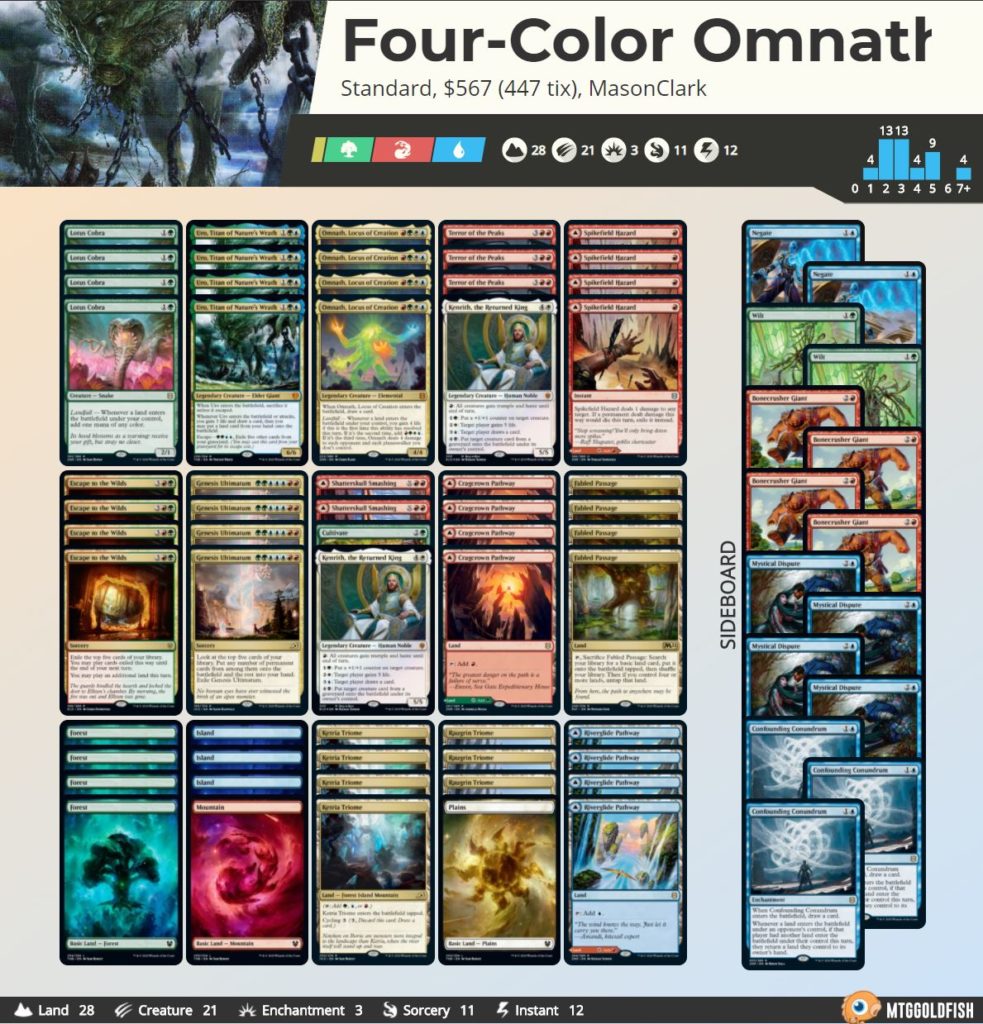
Buy this deck from Card Kingdom
Export this deck to Arena via MTGGoldfish
I started off last Thursday playing the Mono-Black Aggro deck I wrote about in last week’s article. On Day One, it was great! Players’ builds of the Omnath decks were very clunky at the time, and the fast clock and disruption that Mono-Black provided led me right into Mythic. But the Omnath decks quickly adapted from there, and a deck that could consistently gain four life each turn became very hard to attack on the ground. Mono-Black started to feel like a house of cards: I couldn’t consistently beat the Omnath decks after just some small adaptations.
Eventually, I gave in and picked up the Omnath deck myself. I love to play “big mana” decks that go over the top of everything else, so it still felt like a good fit for me. I started playing a build that my podcast cohost Ally Warfield had found on Twitter, which included both Bonecrusher Giant and Ugin in the main deck. I ended up playing this version of the deck on the ladder for most of Friday, but by the time Saturday rolled around, I felt I had enough games under my belt to start tweaking the deck.
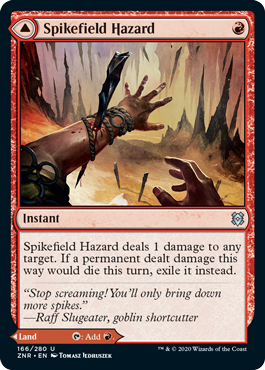
First, I removed Bonecrusher Giant from the main in favor of another modal card that has become a staple of the deck: Spikefield Hazard. You need a way to interact with Lotus Cobra in the mirror, and you would prefer a way to interact on the draw that still allows you to play your own Lotus Cobra on-curve. Spikefield Hazard also doubles as a land, which allows you to consistently curve out. You still want Bonecrusher against aggro decks, but I prefer to keep them in the sideboard.

The next big change was adding two copies of Kenrith to the main deck. This was an idea that Twitch streamer Jana Amari was promoting during the CFB Showdown. I liked the idea of having a mana sink, and in the mirror, my plan was to bring in a ton of countermagic, so Kenrith gave me something to do on the turns when I didn’t feel the need to counter anything. Kenrith also allowed for more explosive turns with Genesis Ultimatum and dodged a lot of cards I thought would be good versus the Omnath deck, like Redcap Melee, Thundering Rebuke and Mystical Dispute.
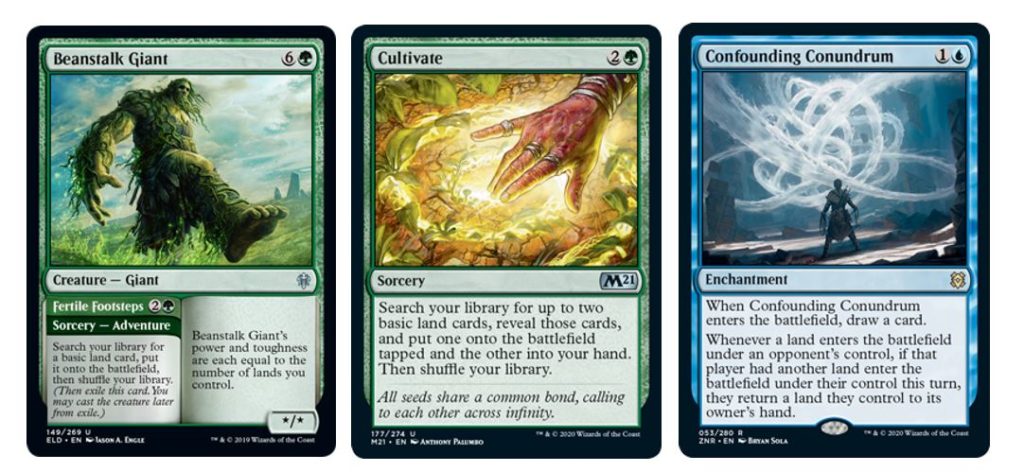
I ended up on this build of the deck after talking to Harlan Firer, though I regret letting him talk me into cutting Beanstalk Giant in favor of Cultivate. Harlan was low on Terror of the Peaks, and I was high on consistently playing five-drops on turn four; when you’re as heavy on Terror as my build, you should play some Beanstalks to enable more kills. I also knew that Omnath decks could play through Confounding Conundrum, but didn’t pull the trigger on just cutting them from my sideboard. Going forward, I would use those slots to shore up match-ups against any decks trying to attack Omnath decks.
Beating 4C Omnath
Before you can go about stopping the Omnath deck, you first need to understand its strengths.

- Lotus Cobra: If you fail to answer Lotus Cobra, you allow the Omnath player to have a huge mana advantage, while also fixing their mana. You need to be able to interact as early as turn two.
- Card Draw: They have eight cards that cantrip — which also happen to be game-ending threats — and eight cards that draw five. This means the Omnath decks can easily churn through their libraries and find the pieces they need. You need to answer at least the first “draw five,” since that will normally set off a chain of spells that will overwhelm you.
- Standalone Threats: If you can deal with all of the above, Omnath decks still have a “fair” game plan to fall back on. Terror of the Peaks, Felidar Retreat and Kenrith can put pressure on you and win games all on their own.
That’s a lot of things to deal with! So, how do you combat all these different angles of attack?
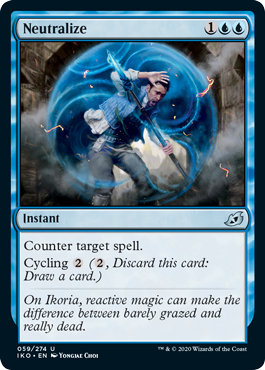
The obvious answer would seem to be to play generic catch-all answers — things like Neutralize and other Cancel variants. That way, you can try and answer the most powerful draw spells and then deal with the back-up threats as they come. But in practice, this is a much harder ask for a control player. The Omnath players get such a large mana advantage, and letting any of the “draw fives” resolve is usually enough to win the game.
This led me to the first card that might beat Omnath, though of all the cards I’m going to suggest, it’s the most ambitious and untested.
Ashiok’s Erasure
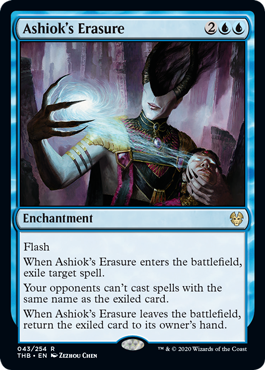
Ashiok’s Erasure is a four-mana counterspell that prevents players from casting copies of the spell it counters. The Omnath deck has a lot of four-ofs for the sake of consistency; if you can effectively remove four copies of Escape to the Wilds, Uro, or Genesis Ultimatum, you’re going to have a much more successful time grinding them out of the game. That might just be enough for your other cards to clean up the rest.
Mystical Dispute
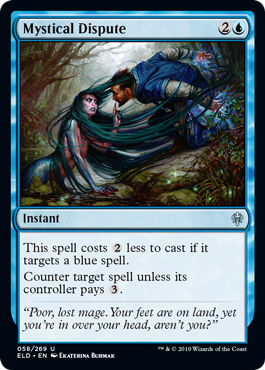
The next card I would consider playing is Mystical Dispute. This will allow you to have lots of tempo-positive answers to the Omnath players’ early and mid-game plays while still being able to develop your own board. Will Pulliam has been playing Temur Adventures with four main deck Disputes, and that has seemed like a winning strategy versus the Omnath decks. (The Adventures deck itself may be a good choice against Omnath decks, since it can go just as long and apply a decent amount of pressure.) Mystical Dispute is a card that is already seeing sideboard play out of the Omnath decks for the mirror, and I would imagine we will soon see it start creeping into main decks. It’s best in a proactive deck, but one-mana “counter your big play” is hard for just about anyone to pass up.
Thundering Rebuke
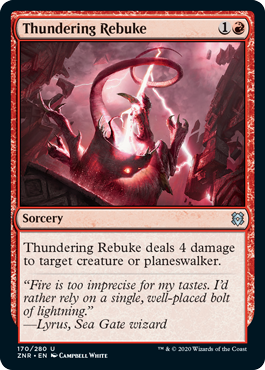
Thundering Rebuke is a card that hasn’t had a lot of press, but it’s very well positioned against the Omnath deck. You can use it as a tempo-positive answer to both Omnath and Terror of the Peaks, or as a Lotus Cobra answer on-curve. This is a card that the Omnath decks could play for the mirror that is rarely dead in other match-ups, but I think it’s best in an aggressive deck. I like this card a lot out of both Mono-Red and Gruul; it allows you to play to the board then have an easy way to clear the way for your creatures to start attacking. It also helps with some of the more problematic cards in other match-ups, such as Questing Beast in Gruul mirrors or Torbran in Mono-Red.
We saw this weekend in both the Hooglandia Open and Bash Bros Podcast tournaments that Gruul was putting up good results, and I imagine having this card in the main deck will force Omnath decks to adapt and stop the arms race. You can’t just plan to go over the top of everyone if the Gruul players are killing your ways to cheat on mana consistently.
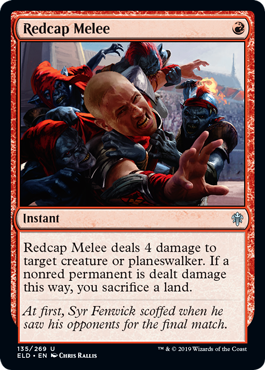
While we’re here, I also want to give a small shout out to Redcap Melee. It’s not as easy to slam four in your main deck, but it’s a nice answer for both Omnath and Terror and it’s very cheap.
Archon of Emeria
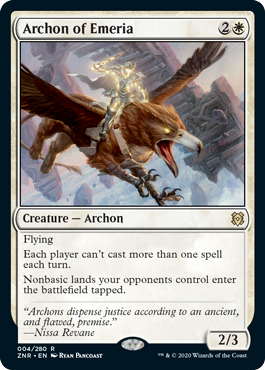
Archon of Emeria is a new white card from Zendikar Rising that could help fight the Omnath decks. I’m not exactly sure what a deck with this card looks like, but overwhelming opponents with card advantage is going to be much harder if each player can only play one spell per turn. It could potentially be good in a Winota deck; Winota can put a lot of pressure on opponents very quickly, and Archon both enables Winota and makes answering your board a challenge for most decks.
Final Thoughts
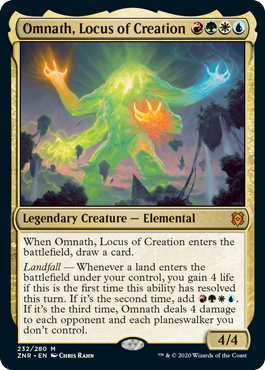
One last thing to keep in mind is that the Omnath decks are still in the early stages of development. It seems all-powerful and it doesn’t think about other decks that much. We often see these types of decks in the early weeks of new formats, before players figure out a way to disrupt them. Every week, you’ll need to adapt to what’s going on — maybe even more so than in previous Standard environments. That shouldn’t dishearten you, but encourage you to look for answers in weird places and find ways to overcome challenges.
Have a deck that’s crushing Omnath? Maybe you have the next great Omnath tech? Tweet at @masoneclark and @card_kingdom and let us know! (No, seriously — I have a PTQ on Saturday!)

Mason Clark is a grinder in every corner of the game who has played at the pro level and on the SCG Tour with Team Nova. Whether he’s competing in Standard, Historic or Modern, Mason plays with one goal in mind: to be a better player than he was the day before. Check out his podcast, Constructed Criticism, and catch his streams on Twitch.

